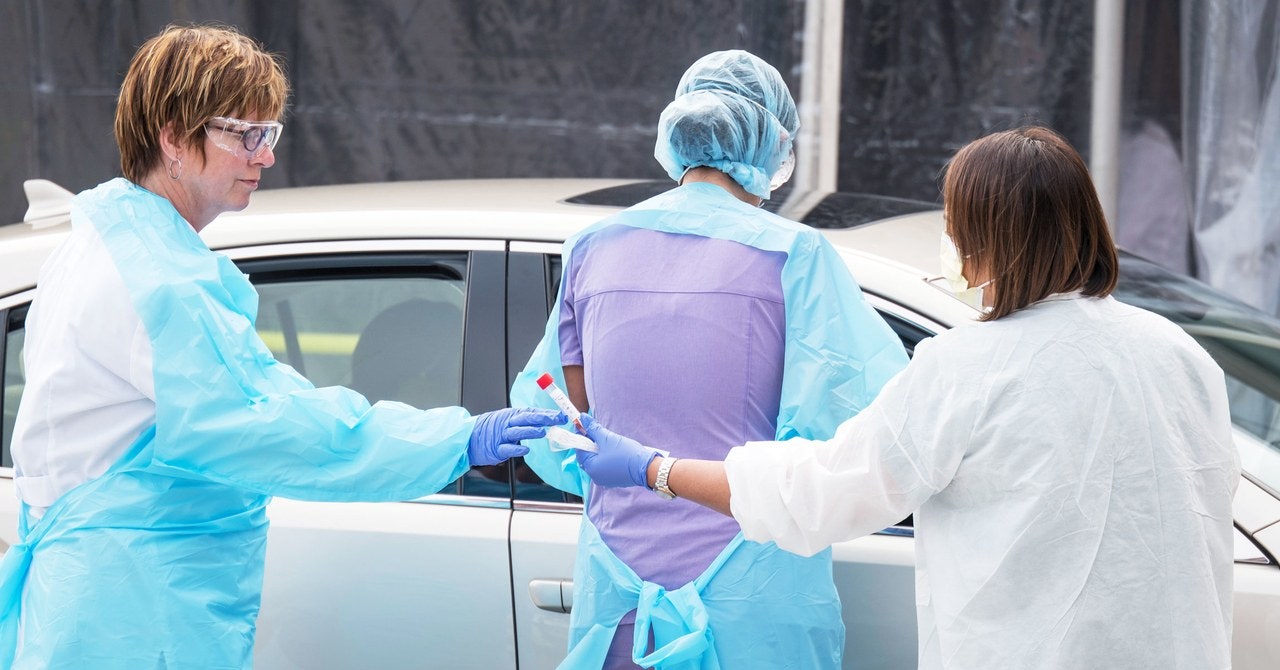Worldwide, the novel coronavirus is officially a pandemic. Within the US, 44 states and Washington, DC, have identified people infected with the virus. The global wave of Covid-19 is about to crash over the country—and the weak point in what happens next is the nation’s health care workers. Or rather, the health of the nation’s health care workers.

What Is the Coronavirus?
Plus: How can I avoid catching it? Is Covid-19 more deadly than the flu? Our in-house Know-It-Alls answer your questions.
The collision of two problems—the slow roll-out of tests for the virus and low supplies of face masks and other protective gear—have left hospital officials unable to say for sure how many nurses, physicians, and other employees might already have been exposed via contact with patients. That has led to hundreds of health care workers being sent home for just-in-case quarantines, and to stress on the medical systems in the states that first experienced community transmission, including Washington, California, Massachusetts, and New York.
Experts in preparedness and infection prevention are worried about maintaining a delicate balance: trying to keep health care workers safe without depriving hospitals of so many workers that they cannot care for the patients who are coming their way.
“Hospitals are already short-staffed, and we are in a severe flu season,” says Saskia Popescu, an epidemiologist and infection-prevention specialist at HonorHealth in Phoenix. “We have to be practical about what we can and can’t do.”
No one takes this lightly. During the last global coronavirus epidemic, caused by the SARS virus in 2003, 21 percent of the victims were health care workers. Before the disease was recognized, a patient brought it from Hong Kong to Hanoi. Realizing it was spreading, the staff of one hospital there transferred out the patients who did not have SARS, then locked themselves inside the hospital with the infected ones. They did not come out for three weeks; in that time, five health care workers died.
Just this week, Berkshire Medical Center, a 300-bed hospital in western Massachusetts, was forced to send home more than 50 of its 800 nurses after they were exposed to the hospital’s first Covid-19 patient. That person arrived with respiratory symptoms but had not traveled anywhere the Centers for Disease Control and Prevention listed as risky, and so a first request to the state public health lab to test the patient for the virus was turned down for not meeting CDC guidelines. That led to the person being treated like any other patient, using standard but not exceptional precautions, until subsequent requests got a test through.
Similarly, exposure to Oregon’s first, unrecognized case of Covid-19 caused dozens of emergency department personnel at Kaiser Permanente Westside Medical Center in Hillsboro to go into home quarantine. And UC Davis Health officials said on March 5 that exposure to an undiagnosed Covid-19 patient required that it send 89 employees home for quarantine and monitoring. (That patient had already been seen at a smaller hospital, NorthBay VacaValley, causing another 100 health care workers from there to go into quarantine.)
Those health care workers are being sent home because the CDC’s strict testing guidelines and the low availability of the kits themselves mean they also can’t be tested. Withou

